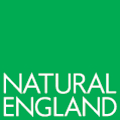
Please tell us a bit about yourself.
I’m 56 years of age, married, with two grown up children. I started work in the building trade from school where I worked in the family business for almost twenty five years. An accident at work, in my early twenties, has left me with chronic back problems in later life. It is due to this injury that I had to give up physical work, and after three major surgeries, looked to find a less physical career. I had always been interested in birds of prey and have been lucky enough to be involved assisting in the running the Raptor Foundation hospital for the last five years, caring for, and rehabilitating, sick and injured birds.
How did you first hear about the scheme?
I have been involved with ringing and monitoring barn owls in the Cambridgeshire area for several years now, and it is through a colleague I work with, Peter Wilkinson, that I became aware of the scheme. He knew of the PBMS, as he too has sent birds through for analysis. We use the scheme because it gives us a comprehensive set of results about the deceased bird, even if the cause of death is apparent. I am especially interested in bird’s deceased weights and how long they can survive without feeding. It is usually barn owls that I send for post mortem.
How/where do you find most of the birds that you submit?
Most of the birds I submit come from members of the public admitted to the Raptor Foundation, with the occasional bird coming to us from vets. A high percentage of these birds have come to me with injuries that I am unable to treat. Although these injured birds have had to be euthanised, I am still keen to learn about the birds overall condition. We do have people, from time to time, who contact us having found deceased birds wanting to know what to do with them. I ask them to send them to me. I also have colleagues in the field who know I am always interested in deceased birds for research purposes.
Do you have any tips for anyone thinking of keeping an eye out for birds to submit to the PBMS?
The majority of birds we receive, come to us a result of road traffic accidents and are therefore, found by the side of the road. Safety has to be of paramount importance, so do not stop on busy roads unless safe to do so or be distracted by looking in the ditches rather than what’s on the road. A passenger is often best placed to look. Birds that have found food hard to find can be found deceased virtually anywhere. These birds can be collected and sent to the scheme too.
We think we know your answer but what is your favourite bird of prey?
The Barn Owl and the Red Kite, both of which I spend much of my life monitoring and observing.






